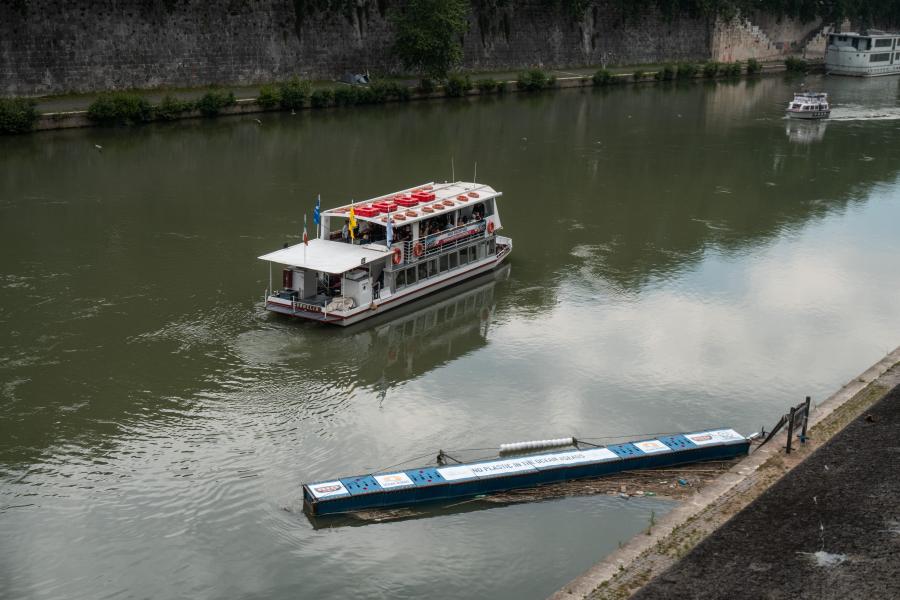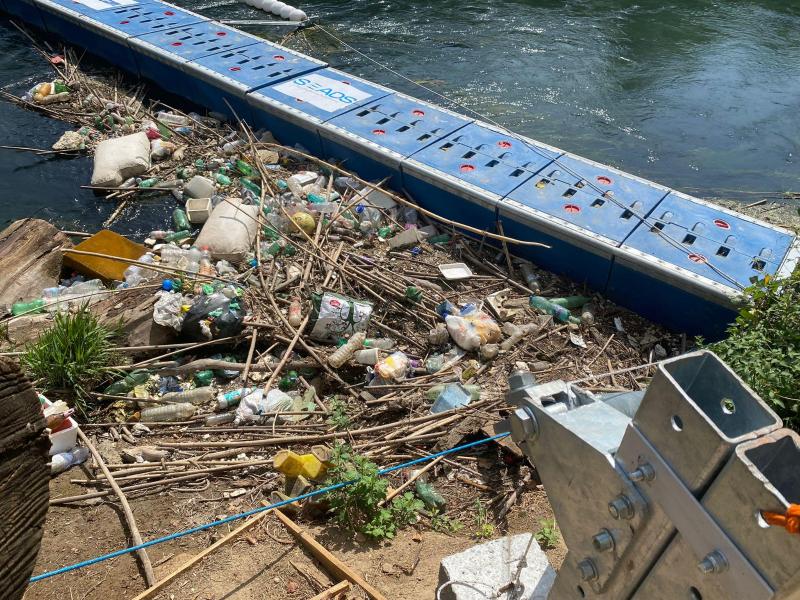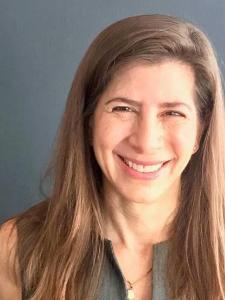Engineer develops barrier to gather plastic in rivers that would otherwise end up in the ocean
Eight years ago, Italian engineer Fabio Dalmonte was pursuing a master’s degree in waste management in Scotland, and doing field work on rivers in Indonesia.
An estimated 80% of the plastic that enters the oceans comes from rivers. Fabio says it occurred to him that the fastest solution to reduce this waste would be “to stop the plastic in the rivers before it gets to the ocean.”
He started developing sustainable, low-cost “Blue Barriers” that would efficiently block river trash.
In 2017, he trialled a prototype in the Lamone River in Italy, and patented it one year later.
He then joined forces with another engineer, Mauro Nardocci, and together they founded the start-up Sea Defence Solutions or SEADS to expand the use Blue Barriers in other rivers.
A barrier made of recyclable material
Within this ecosystem, SEADS’ Blue Barriers stand out for their simple, affordable, efficient design. Each 20-metre section consists of smaller modules and is made of recycled and recyclable material—a steel internal core inside a floating polyethylene structure.
The barriers extend to 90 centimetres below the surface of the water since plastic floats in the top 50 centimetres. They always maintain their perpendicular position, so no waste can slip underneath. They are conceived not to disturb boats nor wildlife.

Blue Barriers keep a perpendicular position to avoid waste slips
Ideally, the Blue Barriers will be produced locally, close to each river where they are installed, to minimise the impact of transportation, while creating jobs in neighbouring communities. SEADS is now working on a version that’s even simpler to manufacture, which should boost scaleup.
Trapping almost 100% of floating plastic in rivers
Trapping plastic debris in moving water might seem like an easy task, but it is surprisingly complex. “Rivers are very challenging, and plastics behave in a particular way in them,” Fabio says.
Strategically placed, the Blue Barriers can trap nearly 100% of the plastic that flows towards them. When a river is sinuous, Fabio says, “You need just one barrier placed after the meander, and it can stop pretty much everything.” When a river is straight, two staggered barriers will do the job.

The Blue Barriers can trap nearly 100% of the plastic that flows towards them
As a river gets wider, SEADS installs as many sections as necessary. When conditions are particularly challenging, such as during storms or floods, the barriers are designed to automatically open, to keep them from being damaged. Afterwards, they can be manually pushed back into place.
After successfully testing one Blue Barrier in the Tiber River in Rome, SEADS conducted its first installation in 2022, in a medium-sized river just outside the Italian capital.
SEADS was a finalist in the European Investment Bank’s 2022 Social Innovation Tournament, which supports social entrepreneurs who are making a social, ethical, or environmental impact.
Creating value from waste
In the next five years, SEADS aims to have Blue Barriers in 30 rivers, collecting 70 000 tonnes of plastic, reducing CO2 emissions by 14 000 tonnes, and saving the lives of 7 000 birds and sea mammals annually.
They currently working on three projects, including the most polluted river in Europe, the Sarno river in the south of Naples, Italy.
Luigi Daniele, an engineer working for the administrative office that oversees the Sarno, says, “We have identified Blue Barriers as the best technology on the market to prevent plastics carried by the Sarno River from entering the sea. We are confident that this technology will make a fundamental contribution to reducing plastic pollution in the Gulf of Naples and on our beaches."
Blocking waste is just the first part of the process, however. Afterwards, it must be removed and treated.
For the barrier outside Rome, two people show up twice a week to collect the plastic waste, then send it out for sorting and recycling. Depending on the quantity of waste, SEADS can also set up an automatic system with a conveyor belt that loads a container. This is only part of the process that uses external power, though it can run on solar energy.
Eventually, Fabio would like the recycled plastic to produce enough revenue to pay for maintenance of the barriers, management of the collected waste, and ultimately, the installation of the barriers.. To that end, SEADS is collaborating with a company leader in the recycling sector to find ways to maximise its quality.
By creating value from debris, SEADS’ Blue Barriers can stay afloat until the world’s rivers are emptied of plastic. “Hopefully not for very long,” says Fabio. “But they will last until they won’t be needed anymore.”
